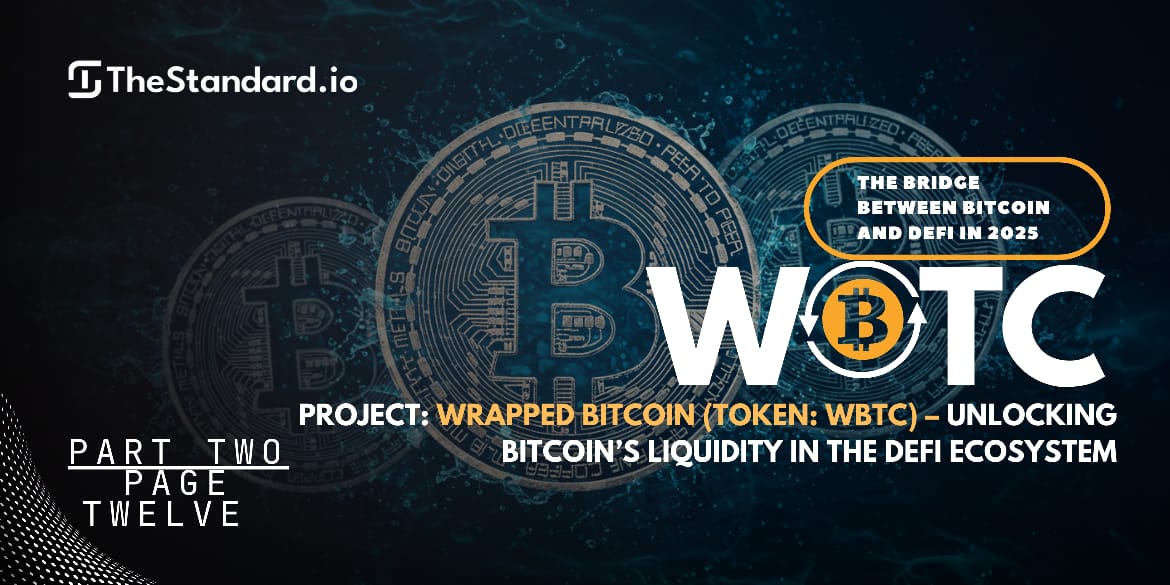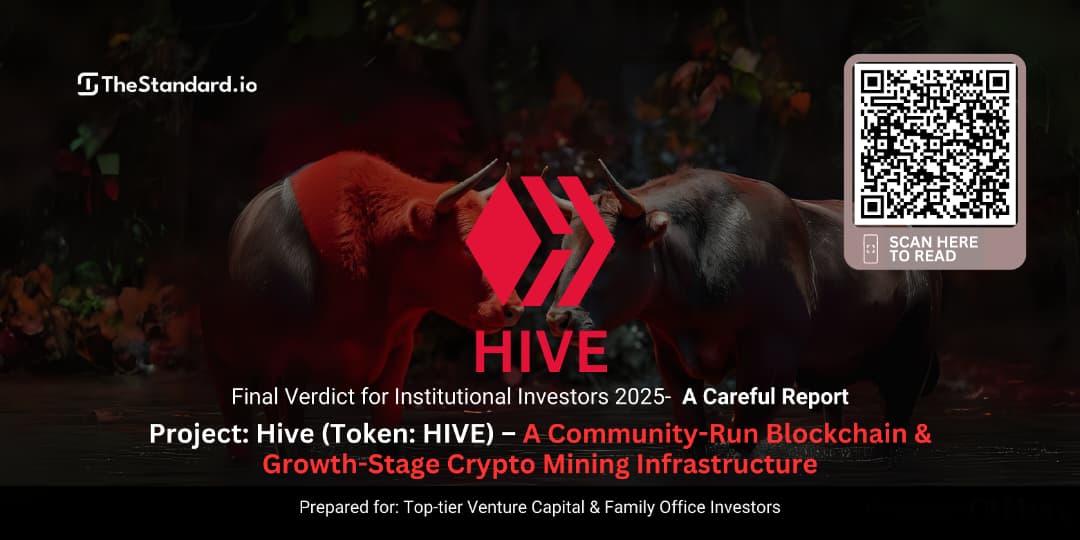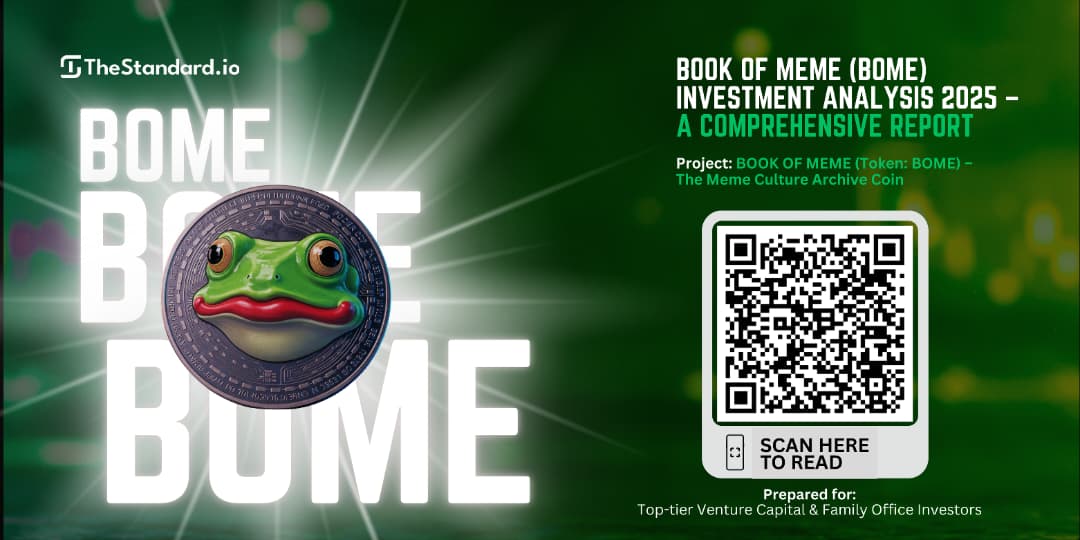Wrapped Bitcoin (WBTC): The Bridge Between Bitcoin and DeFi in 2025 / Part 2

Part 2 / Page 12
8G. Revenue vs. Expenses
Unlike traditional blockchain projects that rely on block rewards, liquidity mining, or staking rewards, WBTC’s revenue model is built around transaction fees. These fees are derived from the minting and redeeming processes, where users either mint WBTC by depositing Bitcoin or redeem WBTC for Bitcoin. The fees for minting and redeeming are typically around 0.25% to 0.5% of the total transaction amount (source: WBTC Minting Process, https://www.wbtc.network).
The revenue model of WBTC is inherently tied to the growth of the DeFi ecosystem and the Ethereum network. As DeFi adoption continues to grow, so does the demand for Bitcoin exposure within Ethereum-based applications. This growth leads to more minting and redeeming activity, which translates to increased revenue for the WBTC ecosystem.
Expenses
The expenses for WBTC are primarily focused on custodial costs, security audits, and proof-of-reserves maintenance. These are essential to ensure that the WBTC system remains transparent and secure. The custodial costs are incurred by BitGo, which is responsible for maintaining the Bitcoin reserves in cold storage and ensuring their integrity through multi-sig wallets.
Additionally, WBTC requires continuous security audits to prevent vulnerabilities in its smart contracts and minting/redeeming process. These audits are conducted by reputable firms like CertiK and Trail of Bits, ensuring that any potential flaws are identified and corrected before they can be exploited (source: CertiK WBTC Security Audit, https://www.certik.org/projects/wbtc).
The revenue generated from minting and redeeming fees is used to cover these operational expenses, as well as to fund the ongoing development and maintenance of the protocol. Since WBTC does not rely on a traditional token sale or ICO for funding, the fee-based revenue model ensures that the protocol remains self-sustaining as long as DeFi adoption continues to grow.
Key sources:
- WBTC Minting Process, https://www.wbtc.network
- CertiK WBTC Security Audit, https://www.certik.org/projects/wbtc
8H. Investor ROI Considerations
Investors who use WBTC generally do so to gain exposure to Bitcoin within the Ethereum ecosystem. Since WBTC is pegged 1:1 to Bitcoin, it allows investors to earn yields through DeFi applications while maintaining their exposure to Bitcoin’s price movements. WBTC can be used as collateral in lending platforms like Aave, MakerDAO, and Compound, where users can earn interest on their WBTC holdings.
The return on investment (ROI) for WBTC holders is tied to the DeFi yields they earn and the price performance of Bitcoin. Investors can earn interest or fees by participating in DeFi liquidity pools or lending protocols that support WBTC as collateral. Given that WBTC maintains its 1:1 peg to Bitcoin, its value increases or decreases in tandem with Bitcoin's market fluctuations. This makes WBTC a unique way for investors to leverage Bitcoin within the DeFi ecosystem.
Since WBTC is fully backed by Bitcoin, it offers a way for Bitcoin holders to gain exposure to the broader Ethereum DeFi space while still maintaining their position in Bitcoin. The ability to earn interest on WBTC within DeFi protocols provides an additional layer of returns for investors, while also enabling them to interact with Ethereum-based applications (source: WBTC ROI in DeFi, https://www.coingecko.com/en/coins/wbtc).
Key sources:
- WBTC ROI in DeFi, https://www.coingecko.com/en/coins/wbtc
8I. Financial Transparency
Transparency is one of the critical pillars of WBTC’s success in the DeFi ecosystem. Unlike many other tokens, WBTC operates in a highly transparent manner, ensuring that the total supply of WBTC tokens is always fully backed by the equivalent amount of Bitcoin reserves held by its custodian, BitGo. This transparency is essential for building trust within the DeFi community and ensures that WBTC holders can verify the true value backing their tokens at any time.
Proof-of-Reserves and Third-Party Audits
WBTC has implemented a robust proof-of-reserves system that ensures every WBTC token is always backed by Bitcoin. The proof-of-reserves mechanism is powered by Chainlink oracles, which provide real-time, tamper-proof data about the Bitcoin reserves held by BitGo. This allows anyone with access to the blockchain to independently verify the Bitcoin backing of WBTC.
The proof-of-reserves system, alongside third-party audits conducted by reputable security firms like CertiK and Trail of Bits, ensures that WBTC remains fully collateralized. These audits are critical in verifying the operational integrity of WBTC’s smart contracts and the Bitcoin reserves held by BitGo. Every minting and redeeming transaction is monitored and recorded, providing an additional layer of transparency for users and institutional investors (source: WBTC Proof of Reserves, https://www.wbtc.network).
WBTC also maintains regular reporting of Bitcoin reserves in a transparent manner. These reports are publicly available, allowing anyone to see the amount of Bitcoin backing the WBTC supply. This transparency creates a level of trust that is vital for any DeFi asset operating in a space that requires users to entrust their funds to decentralized systems (source: Chainlink Proof-of-Reserves, https://www.chainlink.com/).
The Role of Chainlink in Ensuring Transparency
One of the key enablers of WBTC’s transparency is Chainlink, a leading provider of decentralized oracle networks. Chainlink is responsible for ensuring the integrity of WBTC by continuously verifying and updating the status of the Bitcoin reserves that back the token. The oracle system used by WBTC is highly secure and decentralized, meaning no single party has control over the data. This mitigates the risk of data manipulation or centralized failure in the system (source: Chainlink WBTC Proof of Reserves, https://www.chainlink.com/).
In addition to proof-of-reserves, WBTC maintains its commitment to transparency through regular public disclosures about the amount of Bitcoin held in reserve. This system not only serves as a security measure but also provides auditors with the necessary data to ensure that the system is functioning as intended. Furthermore, all minting and redeeming transactions are publicly accessible, allowing for complete traceability of WBTC tokens in circulation.
Key sources:
- WBTC Proof of Reserves, https://www.wbtc.network
- Chainlink Proof-of-Reserves, https://www.chainlink.com/
8J. Treasury Utilization Scenarios
As WBTC is a collateralized token, it does not operate with a traditional treasury model that is reliant on fundraising or token sales. Instead, the primary resources used by WBTC come from the fees generated through minting and redeeming transactions. These fees provide a sustainable revenue stream that covers the costs of custodial management, security audits, proof-of-reserves maintenance, and operational expenses.
Operational Funding via Minting Fees
The minting process for WBTC involves users sending Bitcoin to a WBTC merchant (such as BitGo or Kyber Network), who then issues an equivalent amount of WBTC tokens on the Ethereum blockchain. This process incurs a minting fee, which typically ranges from 0.25% to 0.5% of the transaction amount. This fee covers the custodial costs associated with managing the Bitcoin reserves and provides WBTC with the operational funding it needs to continue supporting Bitcoin-backed DeFi use cases.
In addition to minting, the redeeming process also generates fees. When users decide to redeem their WBTC tokens for Bitcoin, they must go through a WBTC merchant who facilitates the redemption process. Similar to the minting fee, a redeeming fee is charged, again typically ranging from 0.25% to 0.5%. These fees serve as a self-sustaining revenue model that ensures WBTC can continue its operations without relying on external capital (source: WBTC Minting Fees, https://www.wbtc.network).
Use of Funds: Security, Auditing, and Custodial Costs
The fees generated from minting and redeeming are utilized to cover security audits, the management of Bitcoin reserves, and the proof-of-reserves systems that keep WBTC’s backing transparent and verifiable. BitGo, which is responsible for holding the Bitcoin reserves, charges a fee for custodianship, which helps cover the cold storage solutions and multi-signature wallets that protect the funds.
Moreover, regular security audits are performed by third-party firms such as CertiK and OpenZeppelin, which ensure that the WBTC protocol is free of vulnerabilities and that the smart contract code is secure. The cost of these security audits is also funded by the transaction fees. Additionally, WBTC uses Chainlink oracles to ensure that the Bitcoin reserves are accurately tracked, adding an additional layer of transparency to the entire ecosystem (source: CertiK WBTC Audit, https://www.certik.org/projects/wbtc).
By using fees from minting and redemption to fund the WBTC ecosystem, WBTC ensures that it can remain self-sustaining while also providing necessary security protections and maintaining decentralized governance.
Key sources:
- WBTC Minting Fees, https://www.wbtc.network
- BitGo Custodial Services, https://www.bitgo.com
- CertiK WBTC Audit, https://www.certik.org/projects/wbtc
8K. VC Influence on Strategy
Although WBTC is a decentralized token, the VC-backed companies behind its creation still maintain significant influence over the direction of the project. BitGo, Kyber Network, and Ren Protocol were all funded by prominent venture capitalists in the blockchain space, and their involvement has shaped the strategic decisions regarding WBTC’s governance and operational execution.
Influence of Founding Companies
BitGo, as the primary custodian of WBTC, has significant sway over the operational aspects of the project. BitGo’s involvement in the WBTC project has been instrumental in providing the security and custodial infrastructure necessary to make WBTC a trusted asset in the DeFi space. VC-backed companies like Redpoint Ventures and Galaxy Digital, who have provided funding to BitGo, also influence the overall WBTC strategy. This influence manifests in governance decisions, the selection of partners, and the integration of new features.
Similarly, Kyber Network and Ren Protocol are also VC-backed companies, and their influence over WBTC’s development has been significant. For instance, Kyber Network’s liquidity protocol helps drive WBTC’s adoption by providing the decentralized exchange (DEX) liquidity required for users to trade WBTC efficiently. The influence of VC firms involved in Kyber Network has helped ensure that WBTC is integrated with other key DeFi platforms (source: Kyber Network ICO, https://www.kyber.network).
Decentralization and Governance through DAO
Despite the significant influence of VC-backed companies, WBTC is governed by a decentralized autonomous organization (DAO), which ensures that key decisions regarding the project are made with input from a diverse group of stakeholders. The DAO operates via a multi-signature governance model, where key participants in the WBTC ecosystem, including BitGo, Kyber Network, Ren Protocol, and Chainlink, all have a say in the protocol’s direction (source: WBTC DAO Governance, https://www.wbtc.network/dao).
The role of VCs in WBTC’s governance is thus both significant and limited. While VC-backed companies hold considerable influence in the decision-making processes, the multi-sig DAO ensures that decisions are made with the consensus of a broader group of participants, which prevents the dominance of any single entity.
Key sources:
- Kyber Network ICO, https://www.kyber.network
- WBTC DAO Governance, https://www.wbtc.network/dao
8L. Exit Possibilities
Unlike traditional blockchain projects, WBTC does not offer a traditional exit strategy such as an ICO or token buyback program. Instead, WBTC operates in a way that allows users to redeem their WBTC tokens for Bitcoin at any time, providing a clear and straightforward exit mechanism for investors.
Redeeming for Bitcoin
The process of redeeming WBTC involves burning the WBTC tokens and receiving an equivalent amount of Bitcoin from the BitGo reserves. This ensures that the value of WBTC remains tied directly to Bitcoin, and users can always convert their WBTC tokens back to Bitcoin. This process effectively acts as an exit strategy for investors who wish to cash out their WBTC holdings and return to holding Bitcoin.
Liquidity and Market Conditions
The liquidity of WBTC is one of the primary factors that enable this exit mechanism to function smoothly. As WBTC is widely adopted in DeFi applications and is integrated into major Ethereum-based platforms, it maintains high liquidity in the secondary market. If an investor wishes to redeem their WBTC, the redemption process can be completed quickly without significant slippage, provided that the user initiates the transaction on platforms with sufficient liquidity (source: Aave WBTC Collateral, https://www.aave.com).
Key sources:
- WBTC Redemption Process, https://www.wbtc.network/redemption
- Aave WBTC Collateral, https://www.aave.com
Thank you for taking the time to read this article. We invite you to explore more content on our blog for additional insights and information.
https://www.thestandard.io/blog
"If you have any comments, questions, or suggestions, please do not hesitate to reach out to us at [ https://discord.gg/K72hed6FRE ]. We appreciate your feedback and look forward to hearing from you."
CLICK HERE TO CONTINUE
PART 2 / PAGE 13: www.thestandard.io/blog/wrapped-bitcoin-wbtc-the-bridge-between-bitcoin-and-defi-in-2025-part-2-13
6 of the best crypto wallets out there
Vulputate adipiscing in lacus dignissim aliquet sit viverra sed etiam risus nascetur libero ornare non scelerisque est eu faucibus est pretium commodo quisque facilisi dolor enim egestas vel gravida condimentum congue ultricies venenatis aliquet sit.
- Id at nisl nisl in massa ornare tempus purus pretium ullamcorper cursus
- Arcu ac eu lacus ut porttitor egesta pulvinar litum suspendisse turpis commodo
- Dignissim hendrerit sit sollicitudin nam iaculis quis ac malesuada pretium in
- Sed elementum at at ultricies pellentesque scelerisque elit non eleifend
How to choose the right wallet for your cryptos?
Aliquet sit viverra sed etiam risus nascetur libero ornare non scelerisque est eu faucibus est pretium commodo quisque facilisi dolor enim egestas vel gravida condimentum congue ultricies venenatis aliquet sit quisque quis nibh consequat.

How to ensure the wallet you’re choosing is actually secure?
Integer in id netus magnis facilisis pretium aliquet posuere ipsum arcu viverra et id congue risus ullamcorper eu morbi proin tincidunt blandit tellus in interdum mauris vel ipsum et purus urna gravida bibendum dis senectus eu facilisis pellentesque.
What is the difference from an online wallet vs. a cold wallet?
Integer in id netus magnis facilisis pretium aliquet posuere ipsum arcu viverra et id congue risus ullamcorper eu morbi proin tincidunt blandit tellus in interdum mauris vel ipsum et purus urna gravida bibendum dis senectus eu facilisis pellentesque diam et magna parturient sed. Ultricies blandit a urna eu volutpat morbi lacus.
- At at tincidunt eget sagittis cursus vel dictum amet tortor id elementum
- Mauris aliquet faucibus iaculis dui vitae ullamco
- Gravida mi dolor volutpat et vitae lacus habitasse fames at tempus
- Tellus turpis ut neque amet arcu nunc interdum pretium eu fermentum
“Sed eu suscipit varius vestibulum consectetur ullamcorper tincidunt sagittis bibendum id at ut ornare”
Please share with us what is your favorite wallet using #DeFiShow
Tellus a ultrices feugiat morbi massa et ut id viverra egestas sed varius scelerisque risus nunc vitae diam consequat aliquam neque. Odio duis eget faucibus posuere egestas suspendisse id ut tristique cras ullamcorper nulla iaculis condimentum vitae in facilisis id augue sit ipsum faucibus ut eros cras turpis a risus consectetur amet et mi erat sodales non leo.

Subscribe to our newsletter.
Get the latest alpha from us, and the Chainlink build program in an easy-to-read digest with only the best info for the insider.
It's an easy one-click unsub, but I bet you won't; the info is just too good.

Try the future of borrowing today.
Don't wait. It's easy to open a free smart vault
then start earning a yield and borrowing today.
0xf5A27E55C748bCDdBfeA5477CB9Ae924f0f7fd2e
USDs Contract on Arbitrum:
0x2Ea0bE86990E8Dac0D09e4316Bb92086F304622d










